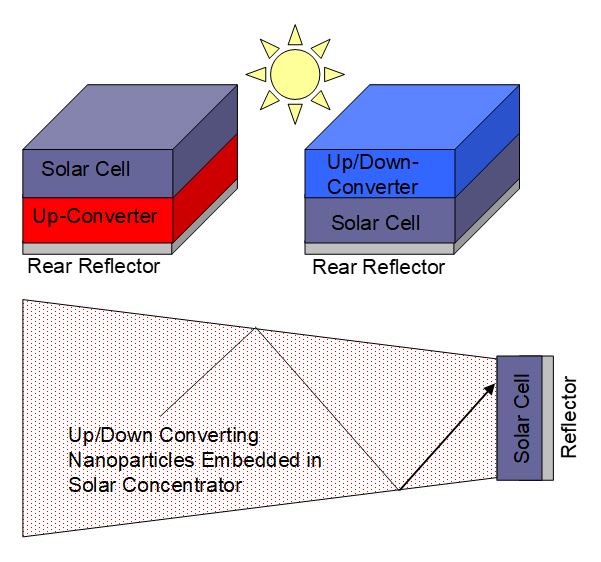Solar cell phosphors can play a critical role in improving the performance of various solar cell technologies. For example, the integration of down-conversion (down-shifting) phosphors inside dye-sensitized solar cells (DSSCs) have been shown to increase the amount of visible light that can be absorbed into the dye. This leads to an increase in the energy conversion efficiency of DSSCs. Similarly, the introduction of a downshifting phosphors that can absorb sunlight in the 350-450nm spectral range and re-emit the solar energy in the green region has been shown to improve the performance of perovskite solar cell technologies.
There are several methods that have been used to incorporate phosphor materials into solar cells, depending on the underlying structure and desired effect. In DSSCs, the wavelength conversion effect appears to be the highest when positioning the phosphors within the TiO2 film layer and into the electrolyte. For perovskite solar cells, a UV-absorbing phosphor can be used to reduce structure degradation by preventing the UV light from reaching the mesoporous TiO2 film. In this case, the phosphor acts to absorb UV light (< 400 nm) and re-emits visible light which is then utilized by the perovskite material leading to both an increase in solar cell efficiency and and improvement in device lifetime.
Incorporating a phosphor material in solar cells is a promising strategy for absorbing and utilizing solar photon energy in the UV, blue and infrared (IR) range. Phosphor-inducted wavelength up-conversion of infrared radiation can also improve solar cell light harvesting efficiency. However, up-conversion phosphors tend to be less efficient overall compared to down-conversion materials. Application of phosphor technology does not require major modification of existing solar cells, as layers are passive and purely optical in operation. Phosphors in general are robust and highly stable crystalline materials that are widely used in many other photonic technologies and products such as solid-state lighting, imaging, displays, and optical sensors.

Illustration of how down-conversion and up-conversion phosphors are used to improve solar cell efficiency.